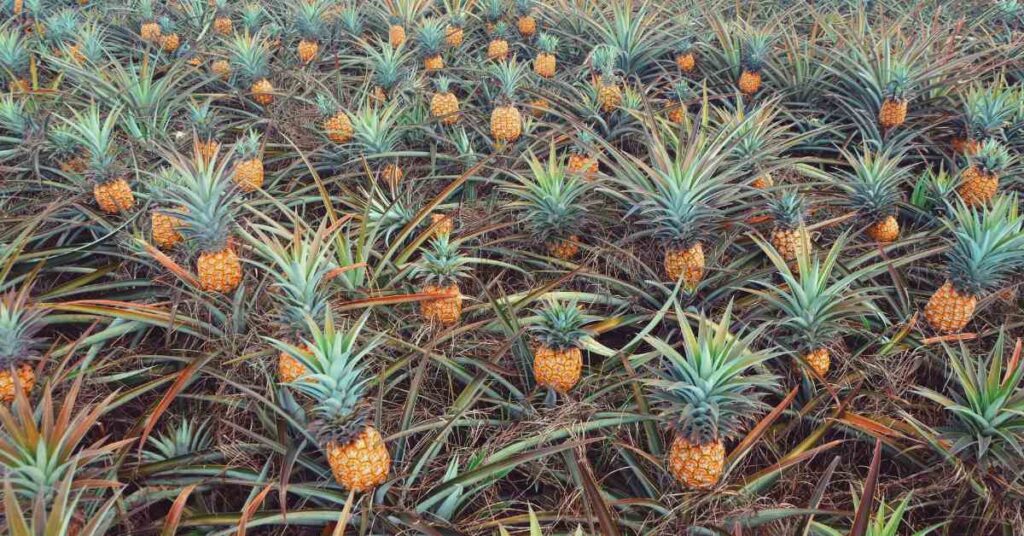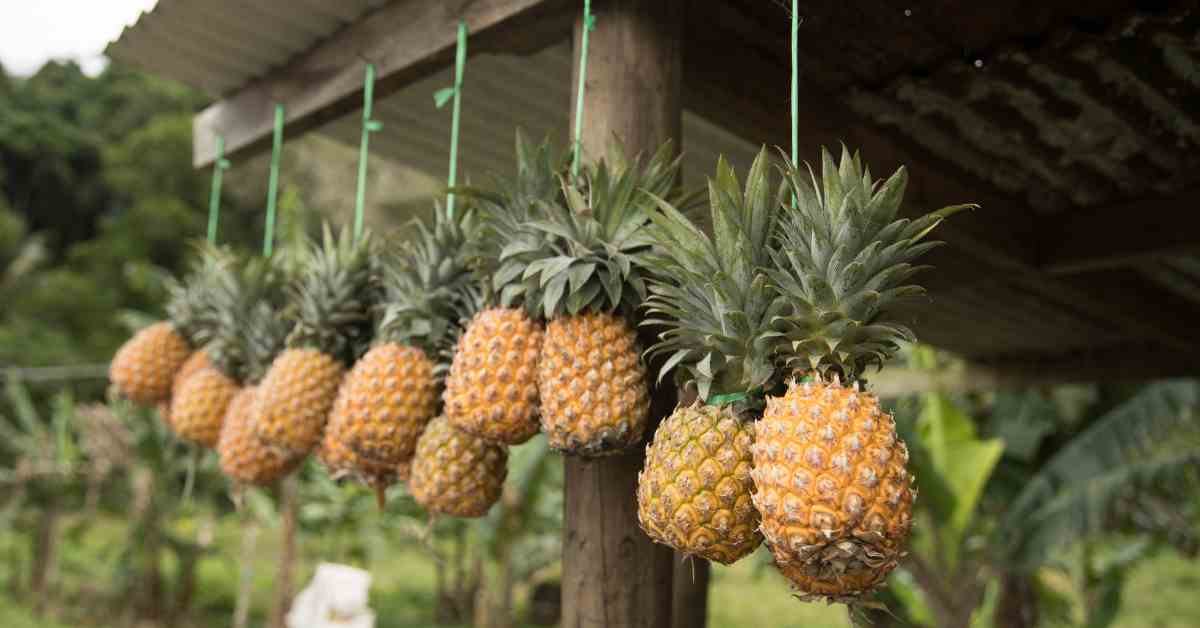Introduction
Pineapples (Ananas comosus), a globally recognized tropical fruit, have a rich history that spans agricultural, economic, and cultural significance. However, beyond the juicy sweetness that many enjoy, pineapples offer much more when examined through a biological and environmental lens. This article takes the term pinapple class and breaks it down into two main perspectives: the biological classification of pineapples and the concept of an educational course focused on the environmental and agricultural aspects of pineapple farming. Through this dual exploration, we hope to uncover the intricate relationship pineapples have with nature and humanity, while also considering how education can play a role in shaping more sustainable practices for the future.
The Biological Classification of Pinapples
To understand pineapples from an environmental and biological perspective, it is essential to delve into their taxonomy, evolutionary adaptations, and their role in ecosystems. This will help us appreciate the complexity of this remarkable fruit and its relevance in a “pinapple class.”
Kingdom, Phylum, and Class: Pineapple’s Place in the Plant World
Pineapples belong to the Plantae kingdom, placing them among the vast diversity of organisms capable of photosynthesis. Within this kingdom, pineapples are classified in the Tracheophyta phylum, which includes vascular plants with specialized tissues (xylem and phloem) for transporting water and nutrients. The pineapple belongs to the class Liliopsida, making it a monocotyledon, characterized by having one seed leaf. These evolutionary adaptations have helped pineapples thrive in specific environmental conditions, making them an interesting case study for a “pinapple class.”
Order: Poales
Within the plant kingdom, pineapples fall under the order Poales, which is known for including grasses, sedges, and bromeliads. The Poales order consists of species that have adapted to a wide range of environments, from temperate regions to tropical climates. Pineapples, specifically, are well-suited to tropical regions due to their tolerance for high temperatures and ability to conserve water. This adaptability makes them an excellent focus for a “pinapple class” on plant evolution and adaptation.
The Bromeliaceae Family: Tropical Plant Diversity
Pineapples are a part of the Bromeliaceae family, a diverse group of flowering plants that predominantly grow in tropical and subtropical regions. This family is known for its ability to thrive in various environmental niches, from rainforests to arid deserts. Bromeliads, including pineapples, are epiphytic or terrestrial, meaning they can either grow on other plants or directly in the soil.
One of the defining features of the Bromeliaceae family is the plant’s ability to absorb water and nutrients through their leaves, which is crucial in their natural habitat where soil nutrients may be limited. Pineapples, although not epiphytic, have evolved to conserve water efficiently, an adaptation that allows them to flourish in areas with inconsistent rainfall. This biological feature would be explored in detail in any “pinapple class” that seeks to understand plant physiology and environmental resilience.
Pineapple’s Role in Ecosystems

Pineapples are more than just a fruit enjoyed by humans. In their natural habitat, they play an integral role in sustaining local ecosystems. Their relationship with other species, contribution to biodiversity, and their role in soil health make them an important focus in a “pinapple class” that highlights ecosystem interdependence.
Pineapple as a Key Species in Tropical Ecosystems
Pineapples are grown in tropical regions, particularly in areas with acidic, well-drained soils. Their growth provides a variety of ecological benefits. As a key species, pineapples support both flora and fauna, serving as a habitat and food source for animals and contributing to the maintenance of soil health.
Pineapples have thick leaves and a robust root system that helps prevent soil erosion, particularly in sloped or hilly regions where erosion can be a significant issue. The plant’s ability to grow in challenging conditions also means it can help maintain the soil structure in areas where other crops might fail, making it a valuable species in environmental conservation. In a “pinapple class,” these ecological contributions would be a focal point.
Pollination and Biodiversity
One of the most fascinating ecological aspects of pineapples is their role in biodiversity, particularly through pollination. Pineapples rely on pollinators such as bats and hummingbirds. In some regions, pineapple pollination is carried out by specific species of bats, making the relationship between the plant and its pollinators a key part of local biodiversity. This interconnectedness would be explored in a “pinapple class” dedicated to pollination and biodiversity studies.
In addition to their interaction with pollinators, pineapples support a variety of other species within their ecosystem. Insects and small animals that feed on the fruit or leaves contribute to a complex web of interactions that enhances biodiversity. Moreover, by supporting wildlife, pineapples indirectly contribute to seed dispersal and the propagation of other plant species in the ecosystem.
The Pinapple Class: An Educational Exploration

The concept of a “pinapple class” can also be approached from an educational perspective. With the increasing need for sustainable farming practices and a better understanding of agriculture’s environmental impact, incorporating an educational framework centered around pineapples can promote environmental stewardship.
Teaching Pineapple Sustainability
A “pinapple class” focused on sustainability would emphasize the environmental, economic, and social aspects of pineapple farming. This course could teach students about the lifecycle of pineapples, from planting to harvesting, while incorporating lessons on sustainable agricultural practices. Such an education would prepare future farmers, agricultural scientists, and environmental advocates to make responsible decisions regarding land use, resource management, and food production.
Integrating Environmental Science
An essential component of this class would involve understanding the environmental impact of pineapple farming. Pineapple plantations, when managed unsustainably, can lead to deforestation, soil degradation, and biodiversity loss. Educating students about the challenges and opportunities of organic versus conventional pineapple farming practices would help them develop innovative solutions for reducing agriculture’s environmental footprint.
This educational exploration would also focus on the role of pineapples in carbon sequestration. As plants, pineapples naturally absorb carbon dioxide from the atmosphere during photosynthesis. Understanding how crop management can enhance this process could be a vital tool in combatting climate change, a key topic for a “pinapple class.”
Pineapples in Culture and Society
Beyond their biological and ecological roles, pineapples have also held significant cultural importance in various societies throughout history. Originating in South America, pineapples were considered a symbol of hospitality and luxury when introduced to European society in the 17th century. In modern times, pineapples continue to represent abundance, prosperity, and warmth in various cultures around the world.
Incorporating a study of pineapples’ cultural significance into a pinapple class could highlight the importance of this fruit beyond its environmental impact. From historical trade routes that spread pineapples across the globe to their symbolic representation in art and design, this segment of the class would provide students with a holistic understanding of how pineapples intersect with culture, economy, and ecology.
Environmental Impact of Pineapple Farming
While pineapples are undoubtedly a valuable agricultural product, their cultivation can have significant environmental consequences if not managed properly. Large-scale pineapple farming, in particular, raises concerns about deforestation, pesticide use, and soil degradation. This aspect would be crucial in a “pinapple class” focused on environmental awareness.
Sustainable Agriculture Practices
Sustainable agriculture seeks to minimize the environmental impact of farming while maximizing yields. For pineapples, this can be achieved through practices such as crop rotation, organic farming, and reducing chemical inputs. A sustainable approach to pineapple farming not only benefits the environment but also enhances the long-term productivity of the land.
Crop Rotation and Soil Health
Crop rotation, a practice in which different crops are grown in a sequence on the same land, is essential for maintaining soil fertility. Pineapples are typically grown as monocultures, meaning large fields are dedicated to one crop, which can deplete the soil of essential nutrients. By rotating pineapple crops with legumes or other plants that enrich the soil, farmers can reduce the need for chemical fertilizers and improve soil structure.
In addition to crop rotation, intercropping—a method where multiple crops are planted in the same field—can further enhance soil health. For example, planting nitrogen-fixing plants alongside pineapples can naturally increase the nitrogen content in the soil, reducing the reliance on synthetic fertilizers. These practices would be central in any “pinapple class” focused on sustainable farming methods.
Organic vs. Conventional Pineapple Farming
The debate between organic and conventional farming methods is particularly relevant in pineapple production. Organic pineapple farming avoids the use of synthetic pesticides, herbicides, and fertilizers, instead opting for natural alternatives that have a lower environmental impact. While organic farming typically results in fewer yields than conventional methods, the environmental benefits can be substantial.
Conventional pineapple farming, which often relies on intensive chemical use, has been associated with soil degradation, water pollution, and harm to local wildlife. However, it is also the dominant method used in large-scale production, particularly in regions like Costa Rica, which is one of the world’s largest pineapple producers. This creates a complex balancing act between meeting global demand and reducing environmental harm.
In a pinapple class, students could explore both the benefits and drawbacks of each farming method, analyzing how organic and conventional systems can be improved to create a more sustainable future for pineapple production.
Pineapple’s Global Trade and Its Environmental Costs
Pineapples are among the most widely traded tropical fruits, with significant production in countries such as the Philippines, Thailand, Costa Rica, and India. However, the global demand for pineapples presents a range of environmental challenges that are worth exploring in a “pinapple class.”
Environmental Costs of Exporting Pineapples
The global trade of pineapples often involves transporting the fruit over long distances from tropical countries to markets in Europe, North America, and beyond. The transportation process, including refrigeration and shipping, contributes to greenhouse gas emissions and climate change.
Furthermore, pineapple plantations established to meet international demand often result in large-scale deforestation, leading to habitat destruction and loss of biodiversity. This is particularly concerning in regions like Costa Rica, where pineapple farming has expanded rapidly in recent years, contributing to the degradation of important rainforests and wetlands.
Promoting Fair Trade and Local Consumption
In response to these environmental challenges, initiatives promoting fair trade and local consumption of pineapples are gaining momentum. Fair trade practices ensure that pineapple farmers receive a fair price for their crops, which in turn helps them adopt more sustainable farming practices. Moreover, encouraging consumers to buy locally grown pineapples can reduce the carbon footprint associated with long-distance transportation.
A “pinapple class” would provide students with an understanding of these global trade dynamics and explore how policies and consumer choices can shape a more sustainable future for pineapple production and trade.
Conclusion
The concept of a pinapple class provides a comprehensive platform to explore not only the biological classification of pineapples but also their environmental, cultural, and economic significance. By examining the pineapple’s role in ecosystems, sustainable farming practices, and the global trade system, a pineapple class can offer valuable insights into how agriculture and environmental conservation intersect.
As pineapples continue to play a vital role in global food systems, it is essential to foster a deeper understanding of their environmental impact and the importance of sustainable practices. Through education, research, and community engagement, a pineapple class can help cultivate a more sustainable future for pineapple farming and for the planet.
Read More: Teaberry: The Small Berry with Big Environmental Impact

